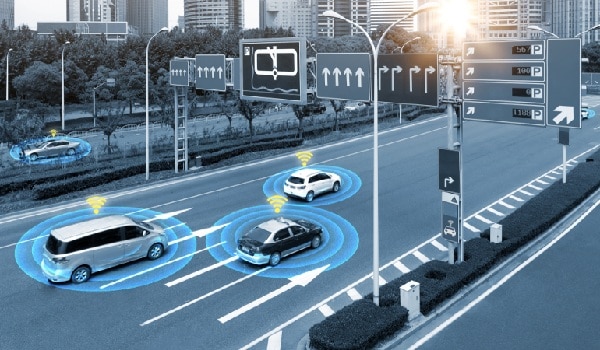Cellular carriers commonly use over-the-air upgrades and original equipment manufacturers (OEMs) to release new firmware and configure phones on their networks over Wi-Fi or mobile internet. An over-the-air or OTA update, for example, is required to initialize a freshly purchased phone. As the market for these devices has developed, carriers and manufacturers have turned to various over-the-air update architecture approaches to release new operating systems (OSes) to smartphones, tablets, and internet of things (IoT) devices and applications. OTA updates have also altered the platform of the vehicle sector. In this article, we’ll look at how over-the-air updates have revolutionized software distribution in the IoT world. So Let’s begin!
OTA Updates Transform Software Distribution

An over-the-air (OTA) update is a wireless delivery of new software, firmware, or other data to mobile devices known as an over-the-air (OTA) update. Companies can help deploy OTA updates using software distribution platforms such as JFrog Connect.
JFrog Connect is an easy-to-use, feature-rich Update tool that can replace/update files, execute remote update instructions, and distribute container changes. It provides all the essential features a user may need to remotely manage their Linux IoT devices, such as remote security control access and device monitoring.
Developers and consumers alike benefit from Over-the-Air updates. Here are some of the significant benefits OTA updates bring to the industry:
It Saves Time, Money, and Energy

Both vendors and users benefit from OTA updates because they save time, money, and energy. For example, OEMs do not need to send teams to manually upgrade individual devices in the event of software issues or bugs because in-person maintenance is no longer required. In addition, because OTAs eliminate the need for vendors to provide field services, maintenance costs are reduced significantly.
Similarly, OTA updates eliminate the need for end-users to physically go to a store or connect to a PC to update their devices, saving them time. Instead, users can integrate software updates into their system with a single tap using Over-the-Air updates.
Additional Revenue Streams, More Features For Users
OTA updates can add extra features to devices not included initially at the time of purchase, thereby allowing manufacturers to increase a device’s value. It could also be sold as a ‘paid upgrade.’ Users can also take advantage of newer features, which keep their products fresh and interactive.
Safety and Reliability
Any customer’s security is their top priority. Therefore, OEMs and vendors can update any device’s firmware or software to ensure it’s updated with the latest cyber security and patch any vulnerabilities or bugs.
For example, As cars progress toward autonomous/automated driving, safety becomes a critical pillar that must always be maintained adequately. Then a redundancy mechanism is implemented, such as dual banking or a MooN (M out of N) scheme. Finally, memory manipulation is a safety-critical process that must be robust enough to handle failsafe scenarios while the ECU is running. For example, an ECU reboot or an unexpected power outage necessitates continuing from the last update point rather than re-running the entire update flow from the beginning.
Less Operational Costs

According to the Stour Risius Ross report, software bugs and issues account for 15% of all recalls across all industries. OTA technology can streamline software/firmware upgrades and fixes, saving businesses a significant amount of money in the long run.
More Maturity
When choosing a differential update solution, you should consider both experience and maturity. This solution must have a large number of vehicles that have already been updated and selected by the largest automotive manufacturer on the market. In addition, it must be up and running and manage updates for tens of millions of vehicles.
Current Applications of OTA Updates
There are several promising OTA use cases in the automotive and IoT application industries today. If you wish to create your own IoT application check out this article and learn the steps to build a successful IoT application. Let’s take a look at a few examples.
Predictive Maintenance
You can add sensors to any machine or equipment and connect them to the platform. This way, you’ll get maintenance status notifications and alerts. Telematics systems combined with OTA can collect and analyze vehicle usage data, as well as predict the need for maintenance and part replacements in advance. In addition, Remote Access Management and Bio authentication mechanisms can be built into car fleet vehicles to grant access to rented cars (e.g., through fingerprint scanning). For example, Fujitsu recently developed a FIDO-compliant authentication system backed by OTA to identify individual users/car owners/car sharers accurately.
Pay Per Use Insurance.

OTAs can also be used to partner with insurance companies to provide personalized protection to customers based on their specific needs. For example, data on the vehicle’s current condition and usage can be sent to the insurer via over-the-air technology, allowing companies to improve business strategies and tailor the experience to the customer’s needs.
Voice-Guided Business Services.
Software updates can be delivered via OTA to ensure that the driver always runs the most recent version. This set of services is handy for corporate car fleets, where drivers are expected to be “always-on.” With driverless cars not far away, business tool integration into vehicles will become even more popular.
Supply Chain Management
OTA also allows you to understand your supply chain operations, involve the right teams, and optimize the supply chain where necessary.
Environmental Monitoring
The IoT platform brings assets from various remote locations together. It has applications in water management, agriculture, and different environmental settings. This ensures that ecological resources are adequately utilized.
Wrapping Up
We can see the use of OTA update management in the IoT and smart device industries in particular. Many IoT product developers may now deploy new smart devices into the field and later prolong their value by adding newer and more inventive capabilities, thanks to Over-the-Air upgrades. An IoT device’s ability to receive OTA updates is crucial for fixing vulnerabilities. This form of update allows producers of technical devices, system integrators, and operators of IoT systems to gradually add new features to their products while also correcting any device vulnerabilities. If you are thinking of starting a business with OTA updates? We recommend checking out this article to learn more about the top software you will need to get started.
In conclusion, OTA technology is also gaining more importance in the automotive industry as it is a backbone of efficient and remote operations in the future. OTA updates significantly increase the performance of IoT. Furthermore, thanks to its widespread capabilities, it has quickly gained popularity and is bringing a revolution in software distribution.
Read also:



